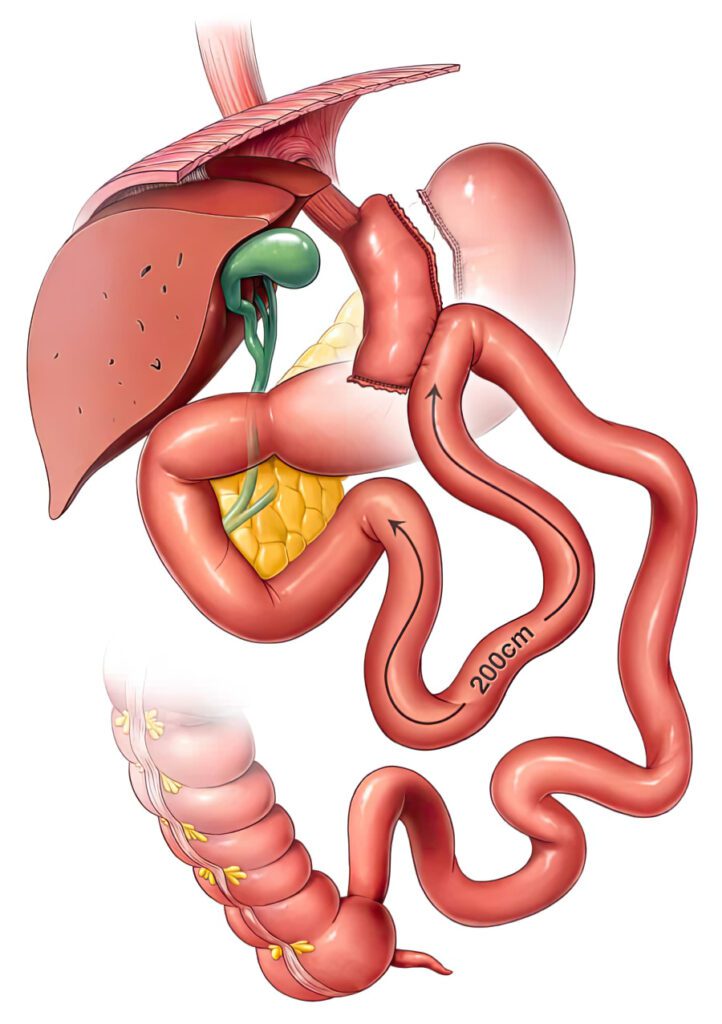Lee, W. J., Yu, P. J., Wang, W., Chen, T. C., Wei, P. L., & Huang, M. T. (2012). Laparoscopic Roux-en-Y versus mini-gastric bypass for the treatment of morbid obesity: a prospective randomized controlled clinical trial. Annals of surgery, 255(1), 45-51.
Musella, M., Susa, A., Greco, F., De Luca, M., Manno, E., Di Stefano, C., ... & Milone, M. (2017). The laparoscopic mini-gastric bypass: the Italian experience: outcomes from 974 consecutive cases in a multicenter review. Surgical endoscopy, 31(1), 263-269.
Noun, R., Skaff, J., Riachi, E., Daher, R., Antoun, N. A., & Nasr, M. (2012). One thousand consecutive mini-gastric bypass: short-and long-term outcome. Obesity surgery, 22(5), 697-703.
Rutledge, R., & Kular, K. S. (2019). Mini-gastric bypass: overview of outcomes and update on controversies. Journal of laparoendoscopic & advanced surgical techniques, 29(8), 1042-1046.








